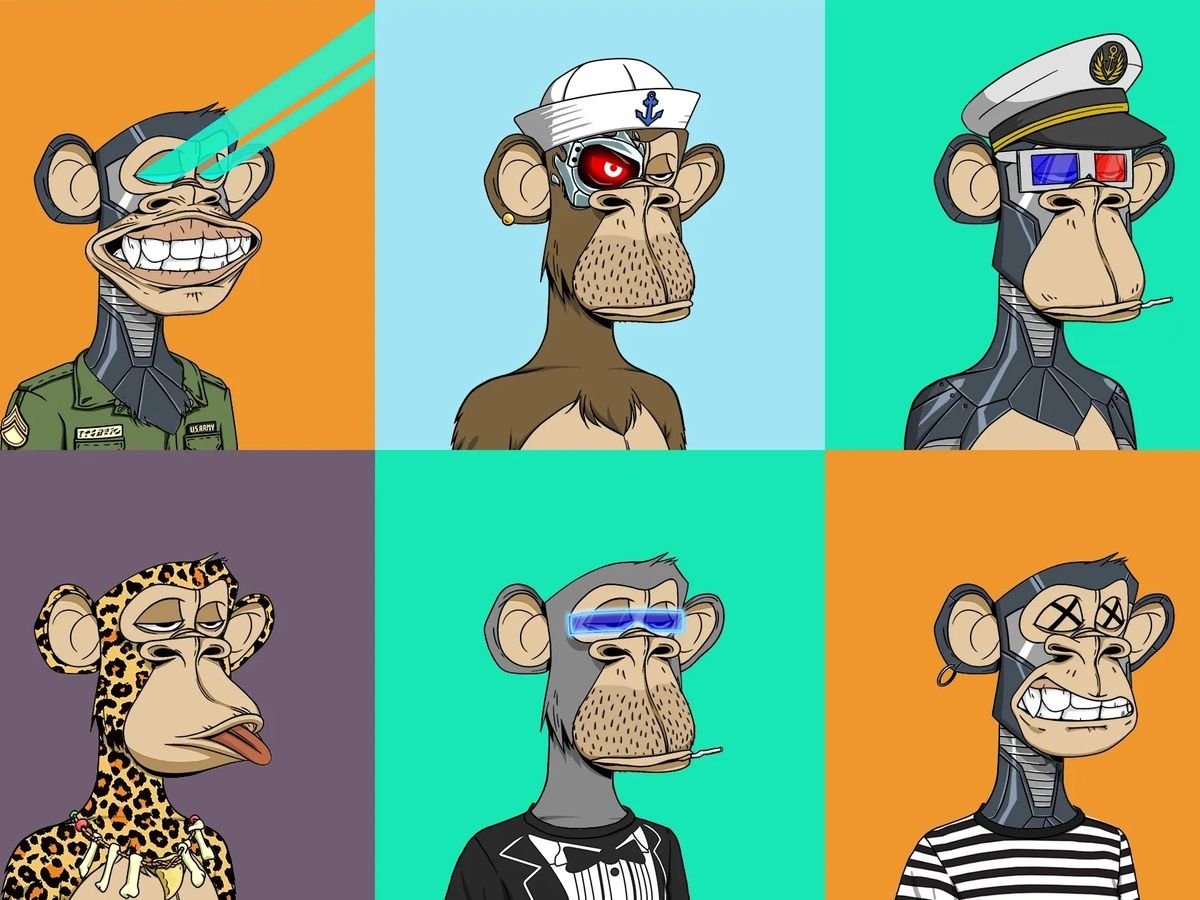- 2036
- Posts
- ⛪ The ultimate NFT thesis
⛪ The ultimate NFT thesis
PLUS: the catholic church, mona lisa & manhattan property
GM everyone. This is 2036, the crypto newsletter that pays you.
You know what bitcoin is. You know what a smart contract is.
Congrats! You're almost an OG.

Next up, we tackle NFTs.
You might have heard about them from Gary Vee. He built one of the largest NFT collections on the back of animals gifted with positive character traits (e.g. grateful giraffe).

He just couldn’t take all the negativity
Or maybe you've come across these bad boys on the internet:

The Bored Ape Yacht Club being bored
Or even better, you've heard stories of wild gamblers who YOLO their life savings into a rock and become millionaires in weeks.

This rock - Ether Rock #55 - sold for 900 ETH in October 2021. That's a cool $3.6 million.
Either way - NFTs are just smart contracts stored on a blockchain.
Contracts are fundamental to all human exchanges. Being 'smart' just allows them to be settled automatically.
And being on the blockchain allows them to be visible to everyone at all times.
But NFTs go a step further.
Think of bitcoin as the Catholic Church. Unwavering. Unmoving. Devoid of (most) innovation.

Ethereum, on the other hand, is like the US economy. Expanding. Innovating. Growing with a roadmap. It even has its own currency - ETH.
By that metaphor, NFTs are like property. The most expensive property - the Bored Apes or Cryptopunks - is like Manhattan real estate.
And within Manhattan, there are different types of property.
Cryptopunks are like protected statues - limited in use but very valuable.
The Bored Apes, on the other hand, are like the new cool walkable neighborhood - an economy that evolves and creates value for its residents.
You can see that in the total value accrued to Bored Ape holders since inception: over 250,000% in one year.

On that note, most people misunderstand how NFTs accrue value.
They think the more copies you can make of something, the less valuable it becomes.
But it's actually the complete opposite.
Think of the Mona Lisa.

The more famous she becomes, and the more copies are distributed around the world, the more her brand grows.
This only makes the original more valuable.
This has been true for thousands of years in virtually every kind of scarce asset.
The exact same is true for NFTs. The more fake copies of the Bored Apes, the more widespread the brand becomes.
And the more copies people own, the more valuable the original becomes.
That's why people buy into it.
They buy into a new world economy with no historical constraint that says - fuck it, we're all gonna make it.
📝 Task: earn $15 in BTC for learning about NFTs
Raoul Pal is one of the great macro educators in the crypto space.
He gives concise frameworks on how to think about crypto. Our job is to share the best ones with you here.
A few weeks ago, he published a great video breaking down the NFT space with swag.
Your task today is to summarize it in your own words.
Step 1: Watch the following video -
Step 2: Send us your summary by filling in this form.
NFTs are making a comeback. February was the best month for NFTs since May 2022.
So I don't know about you, but we are CE-LE-BRA-TIN
This video is one of the best we've seen to explain what's happening with NFTs. You'll thank us later.
Tomorrow we'll share with you our favorite resources of the week.
In the meantime, stay calm and keep stacking sats.